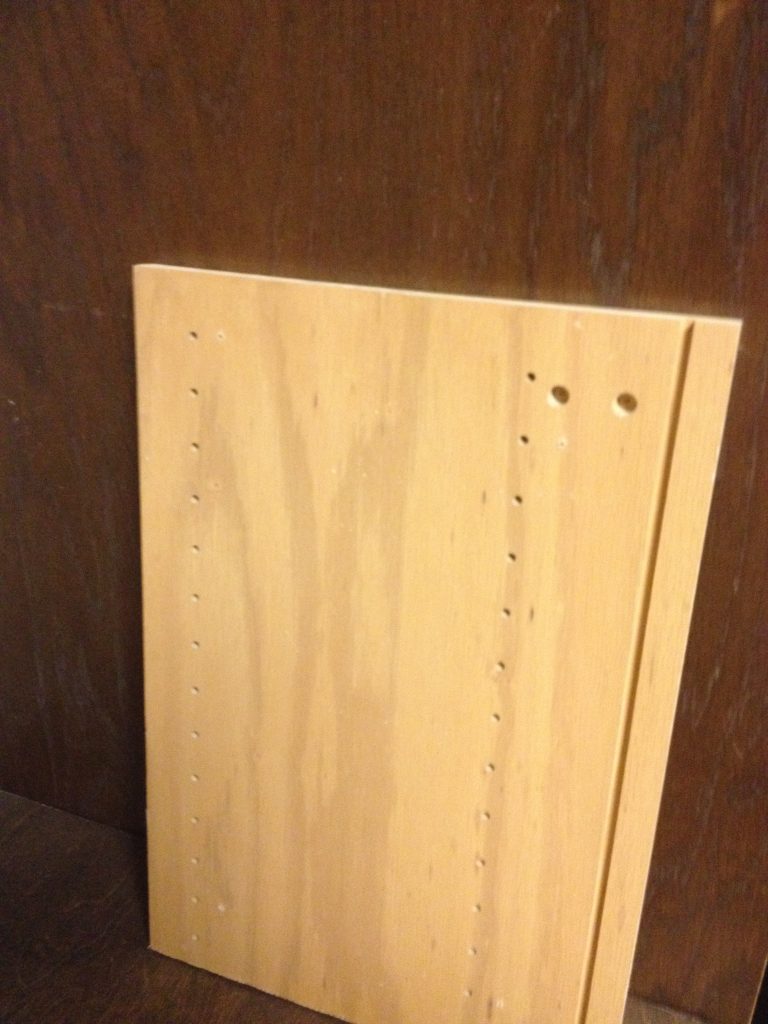 System holes are the basis of 32 mm European cabinets
System holes are the basis of 32 mm European cabinets
System Holes?
The European cabinet is built around a series of 5 mm holes that are placed 32 mm apart, or 1.25″ apart, set in so that these holes serve as the attachment points for hardware like hinges and drawer slides as well as adjustable shelves.
The front holes are set back for the hinge screws, the back screws handle the back drawer slide screws, usually a 5 mm diameter screw. That is around 3/16″, much larger than what is used to secure a hinge in a face frame cabinet, normally a #6 x 5/8″, less than half the diameter. Now with thickness of almost anything you compute the strength as if it was a beam. A screw twice the diameter is four times stronger. Plus the pre bored system holes are put in very precisely. This requires specialized equipment that few Oklahoma cabinet shops possess which is why most make the old fashioned and outdated face frame cabinets..
Precision, precision, precision
The system holes are set equal distance from the ends of the end panels which allows an end panel to be flipped over to use on the other end of the cabinet, no left or right hand end panels.
The parts must be cut to the precise size and in return for all of this careful work you get a cabinet that has doors and drawers made to standard heights that can be produced and installed with no fitting, a huge time saver when assembling cabinets.
The other benefit of system holes is that they make it easy to change out a cabinet from just a door and drawer to a bank of drawers or vice versa. System holes are designed to hold up in cheap particle board so in good MDF or plywood they are much stronger.
The other huge advantage of euro or frameless cabinets is that the cool pullouts and gizmos available are much easier to install and there is zero wasted space taken up by face frames. That will pick up an additional 4″ in most drawer widths.
There is one negative about using system holes and the 32 mm construction system, you save a lot of time but you are also limited to certain height cabinets and certain height doors and drawers. Each is some multiple of 32 mm or 1.25″ plus a constant which allows for the reveal, the amount of space that a drawer or door sets back from the top, bottom, and sides of the cabinet. That standardization does help in the speed of making the parts at the cost of requiring cabinets be certain heights. The use of a different height toe kick helps bring the cabinet to the needed height.
If you are looking for European or frameless cabinets you are in the right place.